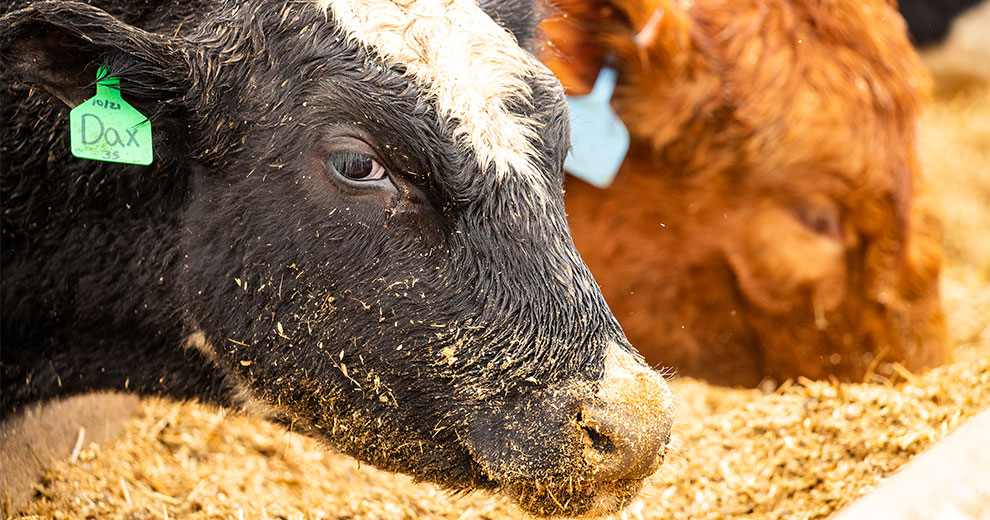Winter bull management
By Lance Kennington, Ph.D., animal nutritionist, CHS
October 20, 2023

By Lance Kennington, Ph.D., animal nutritionist, CHS
October 20, 2023
Bulls tend to be the most neglected part of the herd, as they don’t contribute much to the operation after breeding season. However, getting them into shape and keeping them healthy is critical to the profitability of any operation. Winter is the best time to condition bulls for the spring and summer breeding season. Now is the time to look at your bull wintering program.
Bulls that have been out on pasture for the summer will most likely come into the fall thin and will need to put on weight to achieve a desired body condition score of 5 to 7. Younger bulls should be managed separately than older bulls because they will still be growing and will not be able to compete with the more dominant bulls. Older bulls may injure younger bulls and will also try to push them away from feed resources. Managing them separately will ensure their continued growth, development, and lifetime breeding potential.
Like any class of cattle, bulls need a balanced trace mineral and vitamin supplement to ensure semen quality during their spring breeding soundness exam. Research has shown that feeding flax oil through supplements such as FlaxLic® tubs or Power Booster Bull Challenger will improve semen quality1.

Bulls also need a 2:1 calcium to phosphorus ratio and plenty of good, clean water. A diet that is 12% protein for older bulls and 14% protein for young bulls will ensure there is enough protein to put on muscle as well as growth for the young bulls.
Bulls contribute a tremendous amount to the genetics of the herd and need to be properly cared for to ensure their longevity and productivity in the herd. Proper nutrition and management during winter is essential to maintain fertile, active bulls.
1 Pesta, A.C.; Drouillard, J. S. FlaxLic supplementation improves growth performance of Angus bulls. Kansas State University. Cattlemen’s Day 2010, Beef Cattle Research. https://krex.k-state.edu/handle/2097/8149